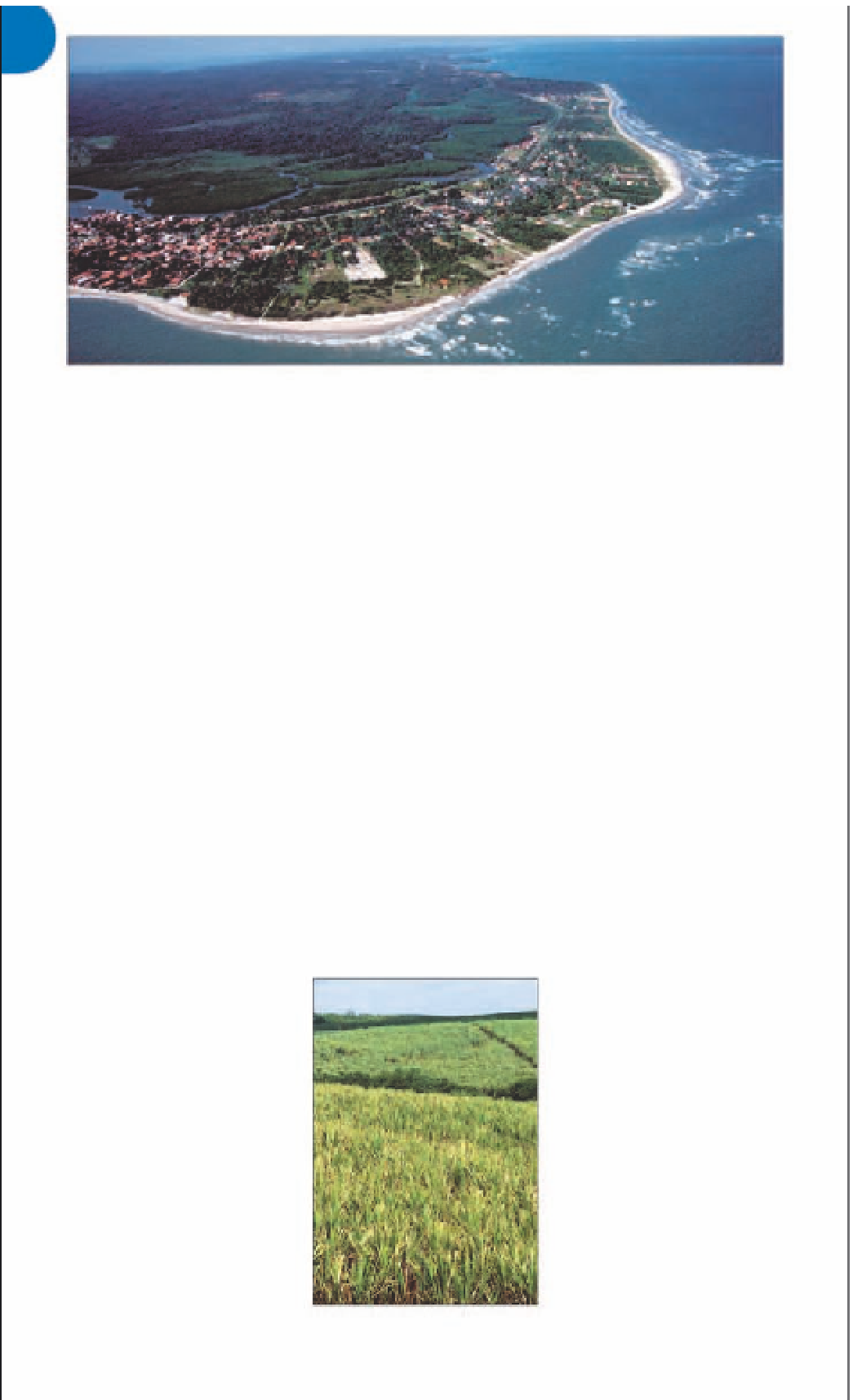Travel Reference
In-Depth Information
Ilha de Itaparica, one of the tropical islands in the Baía de Todos os Santos
Ilha de Itaparica
2
*
and rich soils were condusive
to growing tobacco, and more
signicantly, sugar cane. Until
the crash of the sugar eco-
nomy in the 19th century,
Santo Amaro remained the
focus of Recôncavo's sugar
industry. Dilapidated man-
sions of the erstwhile sugar
barons can still be seen along
the old streets. Nowadays,
this unpretentious town is
known for its paper industry.
It is also famous as the home
town of Caetano Veloso and
Maria Bethânia, two of
Brazil's most popular singers.
Many of the slaves, who
were brought from Africa
to work on plantations,
remained in the Recôncavo
after slavery was abolished in
1888. The region still has a
very high percentage of Afro-
Brazilian residents, and Santo
Amaro plays a key role in
preserving their distinct
traditions. Every year, the city
commemorates the abolition
of slavery with a five-day
festival of the Bembé do
Mercado
.
During this time,
offerings are made to
Yemanjá, Goddess of the Sea,
to celebrate freedom of
religion. In the main square
in front of the town market,
local groups put on
capoeira
performances. Theater per-
formances of pieces, such as
Nego Fugido
(Runaway Slave),
recount the story of slaves
fleeing their masters to join
quilombos
, independent
communities set up by
runaway slaves.
In an effort to keep folkloric
traditions alive, the Afro-
Brazilian community also
organizes presentations of the
lesser-known
maculelê
sword
dance, an African fight-dance,
and
samba de roda
dances
performed by women.
18,000.
g
from Salvador.
®
Zimbo Tropical, (071) 638 1148.
The largest island in the Baía
de Todos os Santos (Bay of
All Saints), with summer-
houses lining its shore,
Itaparica is a popular week-
end refuge for the residents
of Salvador.
Located on the northern tip
of the island, the main city is
guarded by the Forte de São
Lourenço, which was built by
the Dutch in 1711. Among the
island's main attractions are
some historic buildings,
including the 1622 Nossa
Senhora da Piedade (Chapel
of Our Lady of Piety) and the
1610 Igreja de São Lourenço.
The island is connected to
the mainland by a bridge at
its narrow southern tip. The
Praia da Penha
, 10 miles (6
km) south, is a lovely beach
with views of Salvador. The
region's biggest resort,
Club
Med
, lies on the Praia da
Conceição, 12 miles (19 km)
south of town.
Cachoeira
4
*
30,000.
@
n
Praça da
Aclamação 4.
_
Festa da Boa Morte
(Aug 13-15).
Historically more powerful
than the other two main
towns in the Recôncavo -
Santo Amaro and São Félix -
Cachoeira was also the most
prominent. Its strategic
location, between the Baía
de Todos os Santos and the
roads leading inland, made
it an important crossroads
between Salvador and the
rest of the state.
The city once had a busy
river port on the Paraguaçu.
Boats sailed upstream from
Salvador to load up with
Santo Amaro
3
*
60,000.
@
from Salvador.
_
Bembé do Mercado (May 13-18).
The laid-back town of Santo
Amaro lies in the Recôncavo,
the fertile zone at the top end
of the Baía de Todos os
Santos, which has formed the
backbone of Salvador's colo-
nial economy for almost 300
years. The region's high
humidity, abundant rainfall,
Lush hillsides in the Recôncavo,
covered with sugar cane
For hotels and restaurants in this region see pp376-8 and pp401-403





































